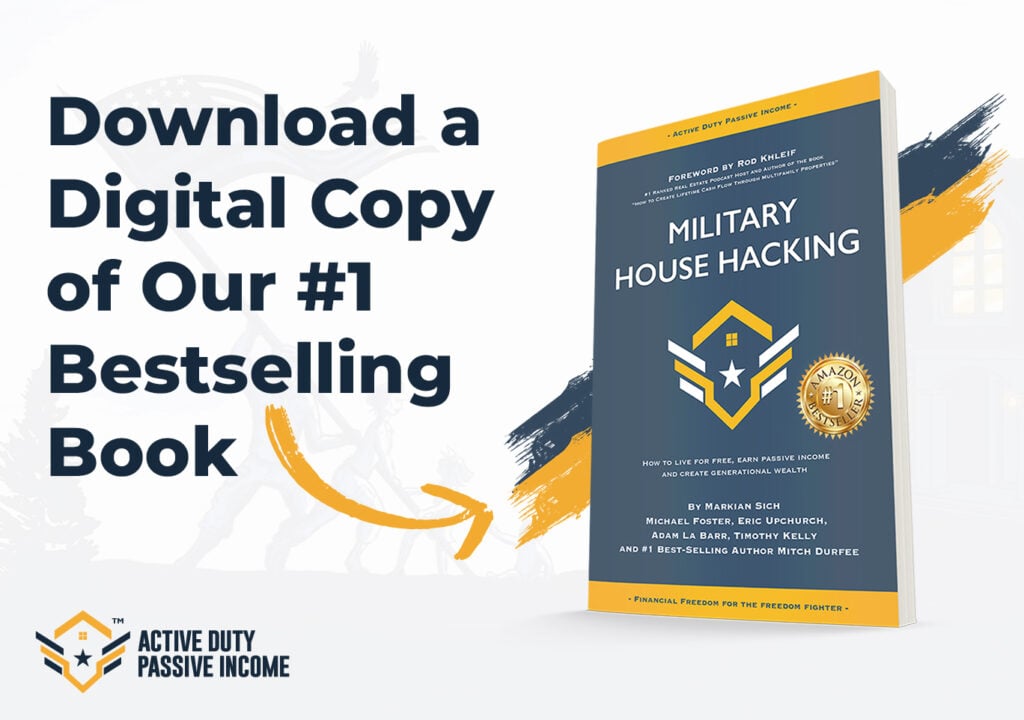Unlock the hidden potential of your VA loan and transform it into a gateway to financial freedom with a multi-family property investment!
Owning a home is a significant milestone for many Americans, and for veterans, the VA loan offers a unique opportunity to achieve this dream with favorable terms. However, the benefits of a VA loan extend beyond single-family homes. One of the lesser-known advantages is the ability to use a VA loan to purchase multi-family properties. This can be a strategic move for veterans looking to invest in real estate, generate passive income, and build long-term wealth. In this blog, we’ll explore the ins and outs of using a VA loan to purchase a multi-family property, from eligibility requirements to the potential benefits and challenges.
Understanding the VA Loan Program
The VA loan program, established by the Department of Veterans Affairs, aims to help veterans, active-duty service members, and eligible surviving spouses become homeowners. The program offers several advantages, including no down payment, no private mortgage insurance (PMI), and competitive interest rates. These benefits make VA loans an attractive option for eligible borrowers.
One of the key features of the VA loan is its flexibility. While it’s commonly used for purchasing single-family homes, the program also allows veterans to buy multi-family properties with up to four units. This provision opens up a world of possibilities for those interested in real estate investing.
Eligibility Requirements
Before diving into the specifics of purchasing a multi-family property with a VA loan, it’s essential to understand the eligibility requirements. To qualify for a VA loan, you must meet the following criteria:
- Service Requirements: You must have served a minimum period in active duty, typically 90 consecutive days during wartime or 181 days during peacetime. Members of the National Guard and Reserves may also be eligible after six years of service or 90 days of active-duty service.
- Certificate of Eligibility (COE): You’ll need to obtain a COE from the Department of Veterans Affairs. This document verifies your eligibility for the VA loan program. You can apply for a COE online, through your lender, or by mail.
- Credit and Income: While the VA does not set a minimum credit score requirement, most lenders prefer a score of at least 620. Additionally, you must demonstrate sufficient income to cover your mortgage payments and other financial obligations.
- Occupancy Requirement: One of the unique aspects of the VA loan program is the occupancy requirement. You must intend to occupy one of the units in the multi-family property as your primary residence. This requirement ensures that the loan benefits veterans who are purchasing homes to live in, rather than purely for investment purposes.
Benefits of Purchasing a Multi-Family Property with a VA Loan
Purchasing a multi-family property with a VA loan offers several advantages that can enhance your financial stability and investment portfolio. Here are some key benefits:
1. Rental Income
One of the most significant benefits of owning a multi-family property is the potential for rental income. When you purchase a property with multiple units, you can rent out the other units to tenants. The rental income generated can help cover your mortgage payments, property maintenance, and other expenses. In some cases, the rental income may even exceed your monthly mortgage payment, providing you with positive cash flow.
2. Building Wealth
Real estate is a powerful wealth-building tool, and owning a multi-family property can accelerate your path to financial independence. As you pay down your mortgage and property values appreciate over time, your equity in the property increases. This equity can be leveraged for future investments, such as purchasing additional properties or funding major life expenses.
3. Tax Benefits
Owning a multi-family property comes with various tax benefits. You can deduct mortgage interest, property taxes, and depreciation on your rental units, reducing your overall tax liability. Additionally, expenses related to property management, maintenance, and repairs can also be deducted.
4. Diversification
Investing in a multi-family property allows you to diversify your investment portfolio. Real estate is often considered a stable and appreciating asset class, which can provide a hedge against market volatility. By owning a multi-family property, you can balance your investment portfolio and reduce risk.
5. Support for Veterans
The VA loan program is designed to support veterans and their families. By using a VA loan to purchase a multi-family property, you’re taking advantage of a benefit earned through your service. This can provide a sense of security and pride, knowing that you’re making a sound financial decision with the support of the VA.
Challenges and Considerations
While the benefits of purchasing a multi-family property with a VA loan are substantial, it’s essential to be aware of the potential challenges and considerations:
1. Property Management
Owning a multi-family property involves more responsibilities than owning a single-family home. You’ll need to manage tenants, handle maintenance requests, and address any issues that arise. Property management can be time-consuming and stressful, especially if you’re new to real estate investing. Consider whether you’re prepared to take on these responsibilities or if you might need to hire a property management company.
2. Financing Limitations
Although the VA loan program offers favorable terms, there are limits to how much you can borrow. The VA does not set a maximum loan amount, but there are limits to the amount of liability they can assume, which affects how much you can borrow without a down payment. These limits vary by county and can influence your ability to purchase higher-priced multi-family properties.
3. Property Condition
When using a VA loan, the property must meet certain minimum property requirements (MPRs) to ensure it is safe, sanitary, and structurally sound. Multi-family properties may require more extensive inspections and repairs to meet these standards, which can be costly and time-consuming. Be prepared for the possibility of additional expenses to bring the property up to VA standards.
4. Market Conditions
Real estate markets can vary significantly from one location to another. Before purchasing a multi-family property, research the local market conditions to ensure there is a demand for rental units. Consider factors such as vacancy rates, rental prices, and economic growth in the area. A thorough market analysis can help you make an informed decision and minimize the risk of prolonged vacancies or declining property values.
5. Personal Finances
While rental income can offset your mortgage payments, it’s crucial to have a solid financial plan in place. Ensure you have enough savings to cover unexpected expenses, such as property repairs or tenant vacancies. Additionally, lenders will evaluate your debt-to-income ratio, so it’s essential to maintain a healthy balance between your income and financial obligations.
Steps to Purchase a Multi-Family Property with a VA Loan
If you’re ready to explore the possibility of purchasing a multi-family property with a VA loan, follow these steps to guide you through the process:
1. Obtain Your Certificate of Eligibility (COE)
The first step is to obtain your COE from the Department of Veterans Affairs. This document verifies your eligibility for the VA loan program. You can apply for a COE online through the VA’s eBenefits portal, by mail, or with the help of your lender.
2. Find a VA-Approved Lender
Next, find a lender who is approved to offer VA loans. Not all lenders are authorized to issue VA loans, so it’s essential to choose one with experience in the VA loan process. Your lender will help you understand your loan options, guide you through the application process, and ensure you meet all the necessary requirements.
3. Get Pre-Approved
Before you start shopping for properties, get pre-approved for a VA loan. Pre-approval involves a thorough review of your financial situation, including your credit score, income, and debt-to-income ratio. A pre-approval letter from your lender will show sellers that you’re a serious buyer and give you a better idea of your budget.
4. Find a Real Estate Agent
Working with a real estate agent who has experience with VA loans and multi-family properties can be invaluable. Your agent can help you find properties that meet your criteria, negotiate with sellers, and navigate the complexities of the real estate transaction.
5. Search for Multi-Family Properties
Start searching for multi-family properties that meet your needs and budget. Remember that you must occupy one of the units as your primary residence to qualify for a VA loan. Consider factors such as location, property condition, and potential rental income when evaluating properties.
6. Make an Offer
Once you find a property you want to purchase, work with your real estate agent to make a competitive offer. Your offer should be based on a thorough market analysis and take into account the property’s condition and potential rental income. Be prepared to negotiate with the seller to reach a mutually beneficial agreement.
7. Complete the VA Appraisal
After your offer is accepted, your lender will order a VA appraisal to assess the property’s value and ensure it meets the VA’s minimum property requirements. The appraisal will evaluate the property’s condition, safety, and market value. If any issues are identified, you may need to address them before proceeding with the loan.
8. Close the Deal
Once the appraisal is complete and all conditions are met, you’ll proceed to closing. During the closing process, you’ll sign the necessary paperwork, pay any closing costs, and finalize the loan. Once the deal is closed, you’ll officially become the owner of the multi-family property.
9. Manage Your Property
After closing, it’s time to manage your multi-family property. Start by moving into your unit and preparing the other units for tenants. Establish a rental process, including tenant screening, lease agreements, and property maintenance protocols. Managing your property effectively is crucial to maximizing your rental income and ensuring a positive experience for your tenants.
Conclusion
Purchasing a multi-family property with a VA loan can be a smart and strategic move for veterans looking to invest in real estate and build wealth. The potential for rental income, tax benefits, and property appreciation makes multi-family properties an attractive option.








